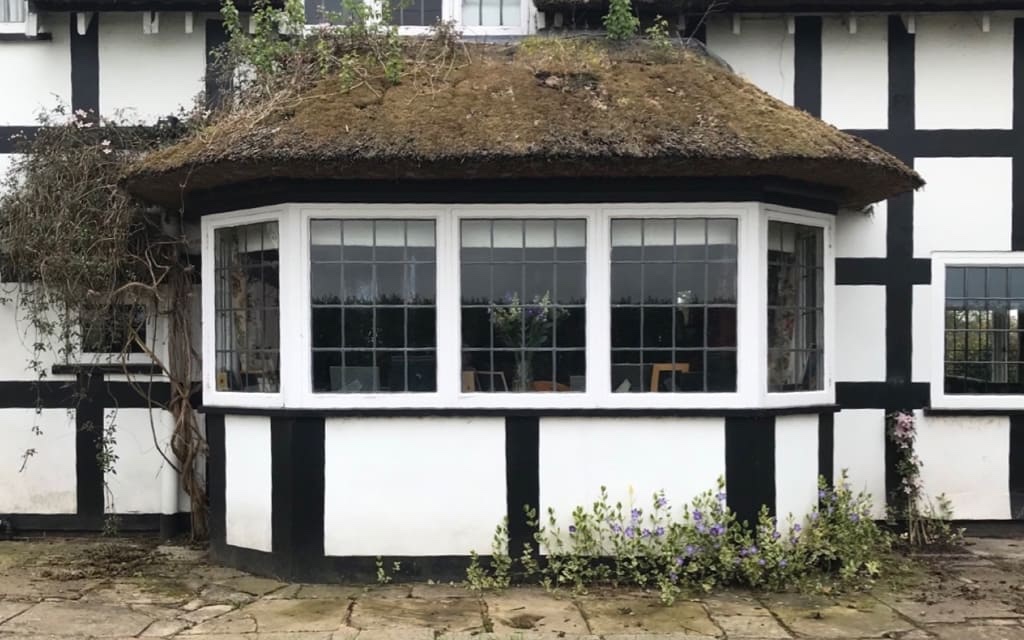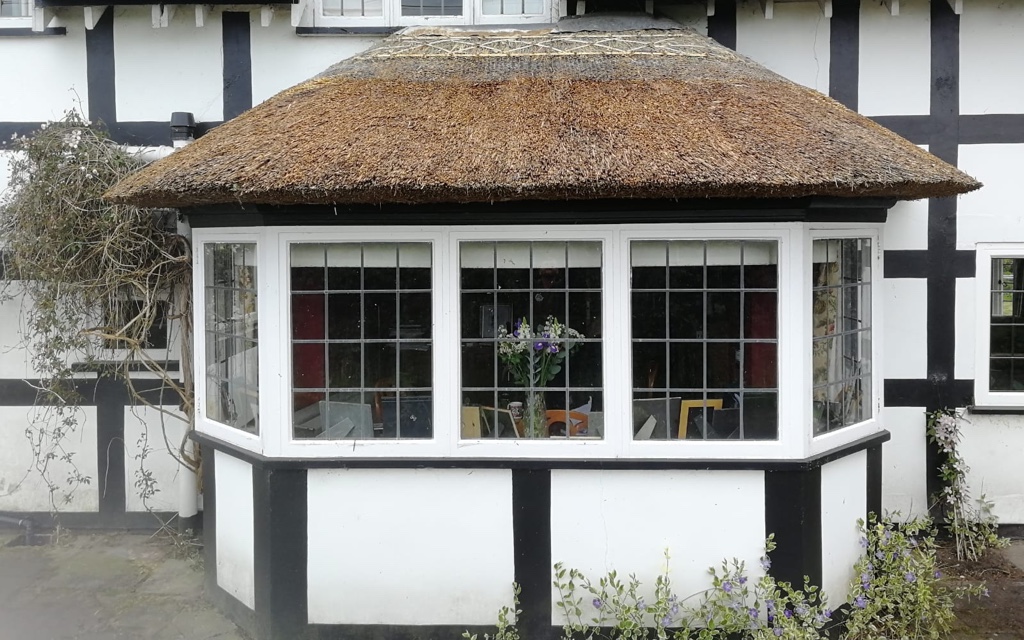Moss removal
Thatch Maintenance

Increasingly, or so it seems, moss and lichen seem to be colouring the surface of thatched roofs, especially on shaded north facing slopes. It is impossible to say whether this is due in part to global warming but certainly milder winters and what I would call a more uniform climate especially in temperature terms throughout the year in the UK must have some bearing on the growth of moss and lichen.
Moss does not have roots but rhizoids through which moisture and nutrients are obtained from the air; therefore the damper or more humid the weather, the more rapid the rate of growth.
Lichen also requires moisture and usually appears before moss on a roof. The surface of most thatched roofs is breaking down creating a damp surface to which the moss and lichen attaches itself. Although it does not have roots, moss has a sporogonium that contains millions of spores, and usually around May the sporogonium turn from green to brown and releases the spores.
When it comes to moss removal, Thatch owners will often ask 'How can I get rid of the moss?' or indeed 'Should I get rid of the moss?'
Most moss and lichen is easy enough to physically scrape off a roof but in doing so a layer of the damp thatch underneath will also be removed. Assuming the fixings (the steel, straw, hazel or string fastenings) are 5 inches below the surface of the thatch and each time a half inch of thatch is removed by scraping the moss off then if this is done every year after 10 years these fixings will be exposed and therefore accelerate the time when a re-thatch is needed. Commonsense is therefore needed and each roof must be looked at on an individual basis.
Please contact us and let us tell you what questions need to be addressed when assessing moss removal and what measures can be used.